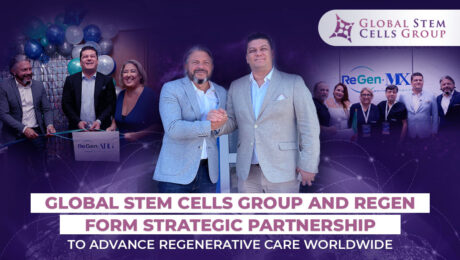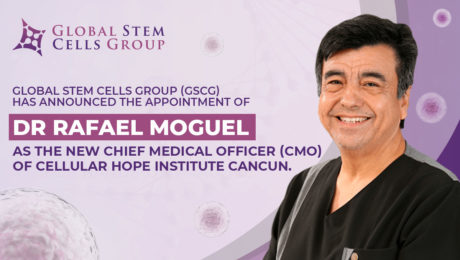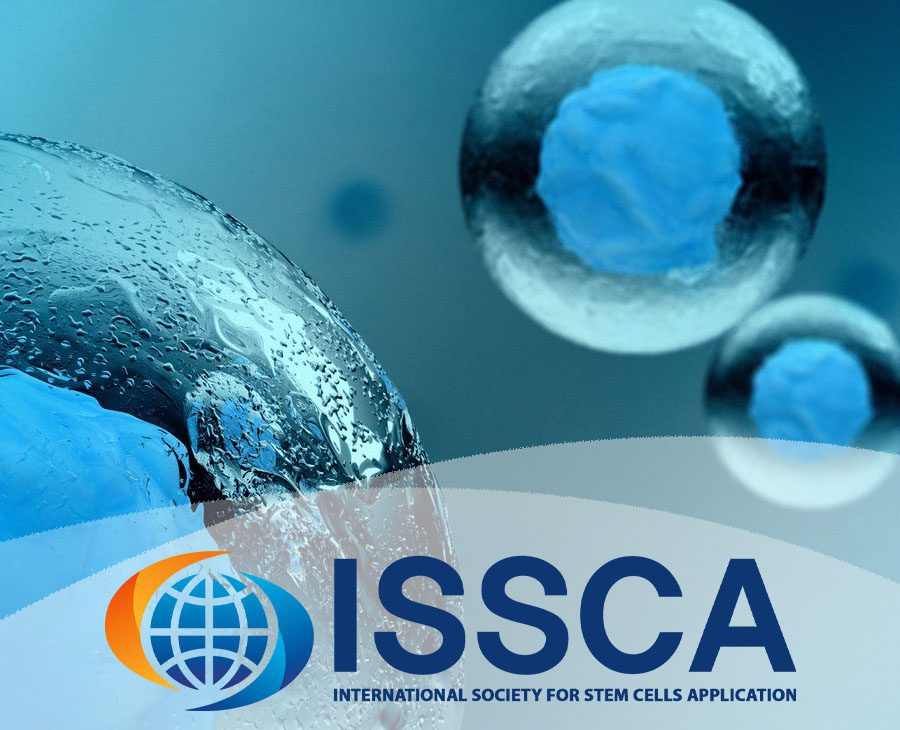Global Stem Cells Group and ReGen Form Strategic Partnership to Advance Regenerative Care Worldwide
Global Stem Cells Group, a leader in the field of regenerative medicine, proudly announces an innovative partnership with ReGen, a highly acclaimed Turkish clinic renowned for its cutting-edge technologies in aesthetic and regenerative care. This strategic alliance exemplifies Global Stem Cells Group’s commitment to advancing the field of regenerative medicine and expanding global access to transformative treatments.
As a trailblazer in the industry, Global Stem Cells Group actively seeks strategic partnerships with companies and organizations that share its vision of advancing regenerative care. The collaboration with ReGen signifies a remarkable milestone in this endeavor.
A Solid Partnership
ReGen, a highly regarded clinic specializing in advanced regenerative care technologies, has joined forces with Global Stem Cells Group to facilitate the expansion of franchising opportunities for specialized regenerative care clinics worldwide. By harnessing the collective strengths of both organizations, this partnership aims to cultivate an environment where their shared expertise and services can flourish, delivering regenerative healthcare solutions to individuals across the globe.
Rapid Growth
Through the partnership, ReGen has experienced remarkable growth, leveraging the Global Stem Cells Group’s name and resources to open two state-of-the-art clinics in Buenos Aires, Argentina, and Cancun, Mexico. These clinics have established themselves as pioneers in the field of regenerative care, surpassing existing alternatives in the region.
By introducing cutting-edge aesthetic treatments such as the perfected hair transplant technique from Turkey, ReGen is revolutionizing the landscape of regenerative healthcare. The clinics now offer patients access to the latest and most effective treatment options available. ReGen’s ability to bring their expertise to new regions underscores Global Stem Cells Group’s vision of making their exceptional services accessible to individuals worldwide.
The Trained Expert Behind ReGen
Leading the way at ReGen is Dr. Salih Yildirim, an esteemed CEO with a visionary mindset committed to spearheading a paradigm shift in the realm of regenerative medicine. Driven by an unwavering passion to extend the benefits of cutting-edge aesthetic technologies hailing from Turkey, encompassing areas such as hair transplantation, rhinoplasty, mammoplasty, and stem cell treatments, he has taken the momentous decision to expand the global presence of ReGen clinics. This strategic alliance with the esteemed Global Stem Cells Group aims to grant greater accessibility to Turkey’s esteemed aesthetic and regenerative medicine treatments, catering to a broader spectrum of patients.
Evident in this initiative is ReGen’s resolute dedication to disseminate its advanced techniques and state-of-the-art technologies across the globe, thereby propelling progress in the field of regenerative medicine.
How Global Stem Cells Group Can Improve ReGen’s Reach
While ReGen brings its advanced techniques and expertise to the partnership, Global Stem Cells Group offers a range of valuable resources. As a conglomerate of companies engaged in product manufacturing and comprehensive training through the International Society for Stem Cell Application (ISSCA), Global Stem Cells Group enhances the partnership’s outreach and impact. This collaboration has the potential to be life-changing for individuals seeking regenerative care worldwide.
Dr. Yildirim expresses his satisfaction with the partnership, stating, “We are delighted to join forces with Global Stem Cells Group. This collaboration allows us to establish additional points of care globally, furthering the accessibility of stem cell applications and advancing regenerative medicine.”
This milestone partnership between Global Stem Cells Group and ReGen is destined to reshape the world of regenerative care. It represents a turning point that will be remembered as a transformative moment for the field of regenerative medicine.
Benito Novas, CEO of Global Stem Cells Group, emphasizes the significance of this alliance, stating, “Our collaboration with Dr. Yildirim spans several years, and he has consistently demonstrated exceptional leadership and humility. By incorporating the ReGen program into the Global Stem Cells Group umbrella, which encompasses products manufacturing, ISSCA training, and centers of excellence for point-of-care regenerative medicine, we continue to solidify our commitment to excellence.”
As this partnership evolves, both organizations will continue to work tirelessly to develop new treatments, enhance existing procedures, and ensure the highest standards of patient care. Through their joint efforts, they will accelerate the adoption of regenerative care practices on a global scale, creating a ripple effect that will benefit patients and healthcare providers alike.
For more information about Global Stem Cells Group and its regenerative medicine solutions, please visit https://www.stemcellsgroup.com/.
About Global Stem Cells Group
Global Stem Cells Group is a leading provider of regenerative medicine solutions, dedicated to advancing healthcare through innovative therapies. With a global presence and a multidisciplinary team of experts, the organization strives to harness the potential of stem cells and regenerative medicine to improve patient outcomes across various medical fields. Through its extensive network of clinics, research facilities, and training centers, Global Stem Cells Group is committed to pushing the boundaries of regenerative medicine and making a positive impact on global healthcare.
About ReGen
ReGen is a highly acclaimed Turkish clinic renowned for its expertise in cutting-edge technologies related to regenerative care. Headquartered in Istanbul, ReGen has gained international recognition for its commitment to excellence and its groundbreaking advancements in regenerative medicine. By partnering with Global Stem Cells Group, ReGen aims to share its advanced techniques and expertise on a global scale, improving access to regenerative care and transforming lives worldwide.
Safe Harbor Statement: Statements in this news release may be “forward-looking statements”. Forward-looking statements include, but are not limited to, statements that express our intentions, beliefs, expectations, strategies, predictions, or any other information relating to our future activities or other future events or conditions. These statements are based on current expectations, estimates, and projections about our business based partly on assumptions made by management. These statements are not guarantees of future performance and involve risks, uncertainties, and assumptions that are difficult to predict. Therefore, actual outcomes and results may and are likely to differ materially from what is expressed or forecasted in forward-looking statements due to numerous factors. Any forward-looking statements speak only as of the date of this news release, and The Global Stem Cells Group undertakes no obligation to update any forward-looking statement to reflect events or circumstances after the date of this news release. This press release does not constitute a public offer of any securities for sale. Any securities offered privately will not be or have not been registered under the Act and may not be offered or sold in the United States absent registration or an applicable exemption from registration requirements.
- Published in News
GSCG Announces the Appointment of Dr. Rafael Moguel as New Chief Medical Officer (CMO) of Cellular Hope Institute Cancun
Global Stem Cells Group (GSCG) has announced the appointment of Dr Rafael Moguel as the new Chief Medical Officer (CMO) of Cellular Hope Institute Cancun.
Dr. Moguel, Fellow of the Society for Cardiac Angiography and Intervention (SCAI), Member of the Mexican Society for Interventional Cardiologists, and Member of the Latin American Society for Interventional Cardiology, comes with a wealth of experience and training.
As CMO with vast knowledge and experience, Dr Moguel is expected to change the direction of Cellular Hope Institute Cancun, which offers patients the best treatments in multiple areas, such as sports medicine, pediatric care, chronic degenerative disease, and autoimmunity. It’s a multi-specialty training center for cellular therapies and regenerative medicine, offering the most advanced treatments in cell therapy.
“I have full confidence in the appointment of Dr Rafael Moguel as the CMO of Cellular Hope Institute Cancun,” said Benito Novas, CEO of Global Stem Cells Group. The CEO also expressed his satisfaction in Dr Moguel’s abilities and experience, and is confident that (Dr Moguel) will advance the objectives of Cellular Hope Institute and propel it to new heights.
With his impressive resume, Dr. Moguel has served in various capacities across several top medical institutions. He was the assistant professor for Cardiology and Interventional Cardiology at Hospital 1° de Octubre, where he also handled hemodynamics and internal medicine.
In his acceptance speech, Dr Moguel said, “I want to affirm and reaffirm my commitment to the goals of Cellular Hope Institute.” With his elaborate working experience and professionalism in cellular therapy, he expressed his confidence in rising to the expectations of Cellular Hope Institute.
Dr. Moguel received his medical degree at Universidad Veracruzana in 1983. He holds a valid certification by the Mexican Cardiology Board for Interventional Cardiology. With more than 10,000 interventional procedures, most notably peripheral and brain intervention, coronary, pacemakers and vein interventions, we believe Dr. Moguel has all it takes to propel Cellular Hope Institute to the next level.
The appointment of Dr. Moguel comes barely two months after an earlier announcement by GSCG about opening the multispecialty regenerative medicine center in Cancun. The facility’s main objective is to incorporate different treatments basing on regenerative medicine, and serve as a training center for cellular therapies and regenerative medicine.
We believe Dr. Moguel’s rich background as an assistant professor and head of interventional cardiology and hemodynamics positions him as the best candidate to run Cellular Hope Institute. His experience is expected to make this facility one of the best cellular therapy centers worldwide, and provide more specialized treatment for patients requiring regenerative medicine.
About Cellular Hope Institute
This facility is a center for both patients and medical experts worldwide, and its main objective is to benefit medical experts and patients globally. The facility achieves this objective through offering the best treatments for patients with multiple conditions, such as spinal cord injury, chronic obstructive pulmonary, sports medicine, and autoimmunity, among others. If you need more information about Cellular Hope Institute, please contact us today.
About the Global Stem Cell Group
Global Stem Cells Group, Inc. is the parent company of six wholly owned operating companies dedicated entirely to stem cell research, training, products, and solutions. Founded in 2012, the company combines dedicated researchers, physician and patient educators, and solution providers with the shared goal of meeting the growing worldwide need for leading edge stem cell treatments and solutions. With a singular focus on this exciting new area of medical research, Global Stem Cells Group and its subsidiaries are uniquely positioned to become global leaders in cellular medicine.
Global Stem Cells Group’s corporate mission is to make the promise of stem cell medicine a reality for patients around the world. With each of GSCG’s six operating companies focused on a separate research-based mission, the result is a global network of state-of-the-art stem cell treatments.
Global Stem Cells Group is a publicly traded company operating under the symbol MSSV. https://finance.yahoo.com/quote/mssv/
To learn more about Global Stem Cells Group, Inc.’s companies visit our website.
- Published in News
Stem Cell Treatments Normally Used for Cancer Patients are Helping Multiple Sclerosis Patients
MONDAY, 04 APRIL 2016 / PUBLISHED IN BLOG
Introduction
The British Broadcasting Corporation (BBC) recently reported that stem cell transplant treatments normally used for cancer patients are helping Multiple Sclerosis (MS) patients in the UK. According to the January 18, 2016 report, 20 patients received bone marrow stem cell transplants using their own stem cells, and at least some of the patients who were paralyzed by MS are able to walk again post-treatment.
Impact of Multiple Sclerosis in the UK
Approximately 100,000 people in the United Kingdom suffer from MS, with most new patients diagnosed between the ages of 20 and 30 years. “To have a treatment which can potentially reverse disability is really a major achievement,” says Prof Basil Sharrack of Sheffield’s Royal Hallamshire Hospital in Sheffield, England.
Autologous Hematopoietic Stem Cell Transplantation (HSCT)
The treatment, known as autologous hematopoietic stem cell transplantation (HSCT), involves the intravenous infusion of autologous or allogeneic stem cells harvested from the patient’s own bone marrow to reestablish hematopoietic function (formation of blood or blood cells) in patients whose bone marrow or immune system is damaged or defective by chemotherapy. Using stem cells harvested from the patient’s bone marrow helps rebuild the immune system. The theory is that these newly harvested cells are at such an early stage in development that the cellular defects that result in MS do not exist. “The immune system is being reset or rebooted back to a time point before it caused MS,” says Prof John Snowden, consultant hematologist at Royal Hallamshire Hospital.
Patient Success Stories
The BBC’s Panorama program spoke to several MS patients who have undergone the stem cell transplant. Steven Storey was diagnosed with MS in 2013 and, within a year, went from being an able-bodied athlete to wheelchair dependent and losing sensation in much of his body. “I went from running marathons to needing 24-hour acute care. At one point I couldn’t even hold a spoon and feed myself,” Storey says.

Clinical Trials and Research
The Royal Hallamshire Hospital along with hospitals in the United States, Sweden, and Brazil, is part of an international clinical trial called MIST that is assessing the long-term benefits of the stem cell procedure on MS patients. Study participants all have relapsing-remitting MS (RRMS) and received intensive chemotherapy to completely destroy the patients’ immune systems.
Cost and Accessibility of Treatment
Treatment costs are about the same as the annual cost for existing treatments, and the stem cell treatment does not require the use of new or existing medications. Prof Richard Burt of Northwestern University in Chicago carried out the first hematopoietic stem cell transplantation for MS in 1995, and is coordinating this current MIST international trial, which began in 2006. “There has been resistance to this in the pharma and academic world,” Burt says. “This is not a technology you can patent and we have achieved this without industry backing.”
Study Results and Future Implications
A study published last year involving MS patients in Chicago showed significant reductions in neurological disability, and for some, the improvements persisted for at least four years, although there was no comparative control group. The outcomes of the current international trial will be reported in 2018 and may determine whether the stem cell transplant becomes a standard in the United Kingdom’s healthcare system for many MS patients. “Ongoing research suggests stem cell treatments such as HSCT could offer hope, and it’s clear that in the cases highlighted by Panorama they’ve had a life-changing impact,” says Emma Gray, M.D., head of clinical trials at UK’s MS Society.
- Published in Blog




